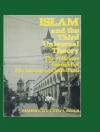Medieval courtiers defined themselves in ceremonies and rituals. Tournaments, Maying, interludes, charivaris, and masking invited the English and French nobility to assert their identities in gesture and costume as well as in speech. These events presumed that performance makes a self, in contrast to the modern belief that identity precedes social performance and, indeed, that performance falsifies the true, inner self. Susan Crane resists the longstanding convictions that medieval rituals were trivial affairs, and that personal identity remained unarticulated until a later period.
Focusing on England and France during the Hundred Years War, Crane draws on wardrobe accounts, manuscript illuminations, chronicles, archaeological evidence, and literature to recover the material as well as the verbal constructions of identity. She seeks intersections between theories of practice and performance that explain how appearances and language connect when courtiers dress as wild men to interrupt a wedding feast, when knights choose crests and badges to supplement their coats of arms, and when Joan of Arc cross-dresses for the court of inquisition after her capture.
Cuprins
List of Illustrations
Note on Citations
Introduction
Chapter 1 Talking Garments
Chapter 2 Maytime in Late Medieval Courts
Chapter 3 Joan of Arc and Women’s Cross-Dress
Chapter 4 Chivalric Display and Incognito
Chapter 5 Wild Doubles in Charivari and Interlude
Conclusion
Notes
Bibliography
Index
Acknowledgments
Despre autor
Susan Crane is Professor of English at Columbia University and author of Gender and Romance in Chaucer’s Canterbury Tales.












